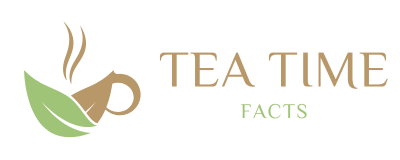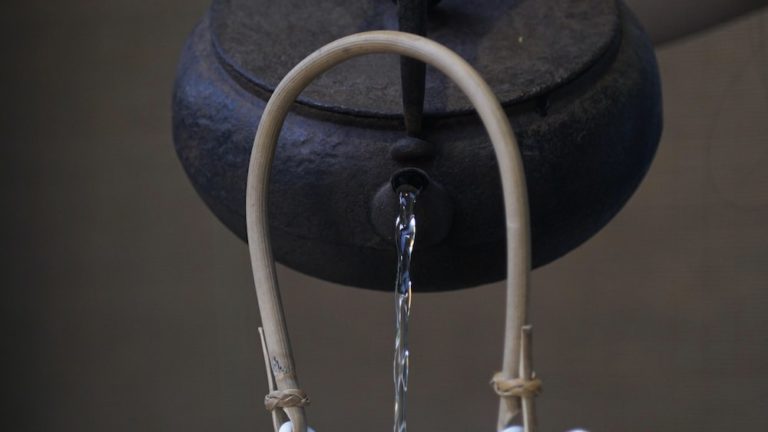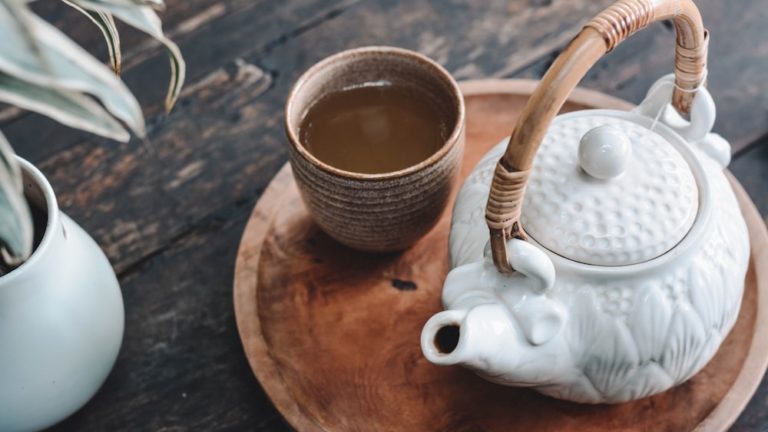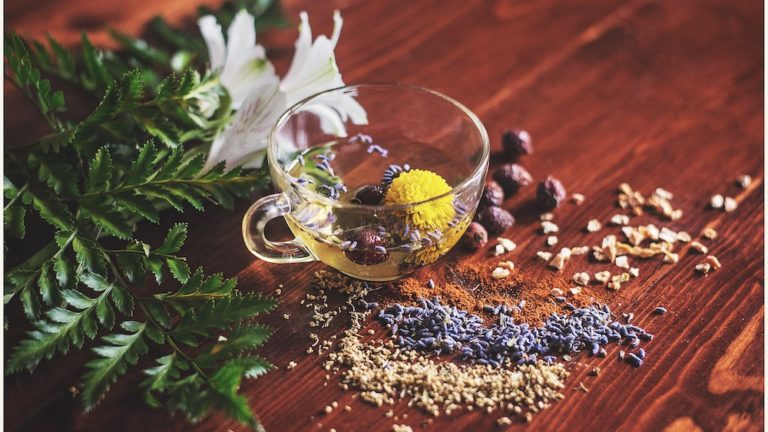Tantalizing Yellow Tea Taste: Unveiling The Flavors
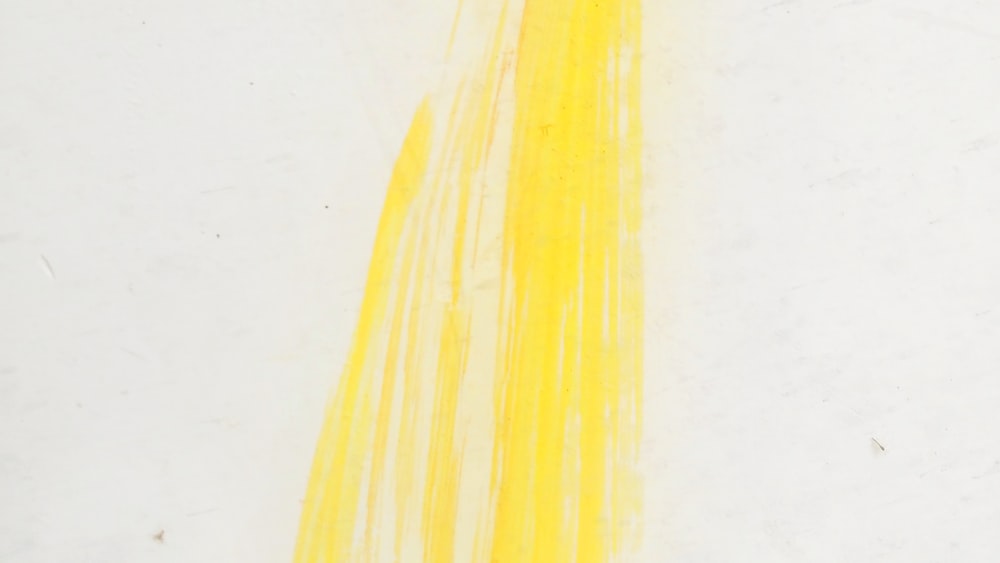
Tantalizing Yellow Tea Taste: Unveiling The Flavors
Hello, my tea enthusiasts and health-conscious comrades! Have you ever found yourself mesmerized by the dance of steam rising from a hot cup of tea, or perhaps pondering the lore and legends behind your favorite leafy brews? Well, buckle up, because today we’re diving into a world less traveled – the delicately enchanting realm of yellow tea taste. I bet some of you are wondering, “Yellow tea? Is that like green tea’s mellower cousin?” In a way, yes, and oh-so-much more!
Imagine, if you will, a tea so rare and exquisite that it quivers the whiskers of even the most seasoned tea aficionados. That’s yellow tea for you – a symphony of flavor and tradition, steeped (pun intended!) in a history that’s as rich as its taste. Whether you’re a connoisseur seeking to expand your horizons, or a newbie on the quest for that perfect cup, we’re about to embark on an aromatic journey together that will titillate your taste buds and widen your eyes in wonder.
So, grab your favorite mug and get cozy; we’re going on a sensory expedition. From its mysterious origins to the meticulous art of production, and let’s not forget the spectrum of flavors that linger on your palate – we’ve got a lot to sip through. And as we uncover the subtle nuances of yellow tea taste, maybe we’ll even discover a few health gems along the way. So, are you ready to unveil the flavors of this rare gem? Secure your taste buds, because they’re in for a real adventure!
The Essence of Yellow Tea
What comes to mind when you hear “yellow tea”? Perhaps you envision sun-drenched fields of tea bushes, or maybe a golden-hued infusion that promises a tasting experience unlike any other. The essence of yellow tea is a tapestry rich with cultural heritage and a flavor profile that is as intriguing as it is delightful. In exploring the essence of this mystifying brew, we’re not just sipping a beverage; we’re imbibing history, one sip at a time.
Defining Yellow Tea
Yellow tea – even the name conjures images of golden sunrises and amber warmth. But what exactly is yellow tea? In the simplest terms, it’s a rare kind of tea that finds its niche between green and oolong teas, heralded for its gentle processing and signature color.
Much like its green sibling, yellow tea undergoes a minimal oxidation process. The magic, however, lies in the additional steps – a slow dance that involves careful withering and wrapping the leaves to mumble their taste and aroma. This unique practice allows the tea leaves to swirl and ferment at their own pace, giving them a distinctive softness that sets them apart from their tea kin.
Yellow tea is a rare kind of tea that undergoes minimal oxidation and unique processing, resulting in a distinctive softness and signature color.
The Rarity and Origin of Yellow Tea
As rare as a moon-flower blooming under a blue moon, yellow tea’s rarity is no exaggeration. Not only is it produced in limited quantities, but the knowledge and skill required to craft it are often passed down through generations of tea masters – making it an art form in itself.
- Historical roots: Trace its origins back to the high mountains and rolling mists of China, where it was once a luxury reserved for emperors and nobility.
- Present-day scarcity: Fast forward to today, and you’ll find that while yellow tea may not be tucked away in royal palaces, it is still a hidden treasure in the tea world, elusive and coveted by those in the know.
In the hands of just a few seasoned artisans, this tea continues to be a symbol of cultural pride and time-honored tradition, nestling itself into the heart of those fortunate enough to discover its charm.

The Art of Yellow Tea Production
The artful crafting of yellow tea is a pageantry of patience and precision, a choreography set by ancient tradition. It’s the alchemy of transforming the humble tea leaf into a liquid gold that demands nothing less than masterful skill and an intuitive touch – a slow dance of nature and nurture.
Traditional Processing Techniques
Mastery of the craft is the game’s name when it comes to yellow tea’s production. Here is where we peek behind the curtain to reveal the artisanal methods that create this misunderstood gem.
- Plucking: It starts with the pluck of the freshest buds, at just the right moment – neither too early nor too late.
- Withering: The leaves are then laid out to wilt, whispering to each other as they lose moisture and soften, ready for their metamorphosis.
- Swaddling: In a technique evocative of tucking in sleeping infants, the leaves are gently wrapped – a cozy embrace allowing them to ferment and develop those signature soft, mellow flavors.
The Impact of Processing on Flavor
Have you ever wondered why yellow tea tastes so distinctively divine? The secret sauce, my friends, is all in the processing.
- Time: A marathon not a sprint, the slow oxidation under controlled conditions plays a pivotal role in crafting the flavor profile of yellow tea.
- Tender loving care: Expert hands manipulate moisture and temperature through a meticulous wrapping process, bestowing upon each leaf a unique fruity and refreshing characteristic that makes yellow tea taste a sensorial delight.
Each careful adjustment in the process nudges the tea towards perfection, ensuring that when it finally graces your cup, it’s nothing short of extraordinary.
The slow oxidation and meticulous processing of yellow tea are crucial in crafting its unique and delightful flavor profile.
The Sensory Experience of Yellow Tea
To sip on yellow tea is to embark on a sensory voyage – one that beguiles the senses and captivates the imagination. It’s a palate adventure where every sip is a brushstroke on the canvas of flavor and aroma intertwined.
Aroma Profile of Yellow Tea
- First Impressions: Picture yourself in a field of just-bloomed flowers; that first whiff of yellow tea is akin to that gentle burst of floral freshness.
- Complex Undertones: Close your eyes and let the steam rise. Beneath the surface lies a symphony of subtle nutty notes and the hint of sweet hay, just cut, drying under the Autumn sun.
- Enduring Whisper: As the aroma lingers, it leaves behind a whimsical trail of warmth and spice that coaxes the senses into a delightful state of anticipation.
The Flavor Spectrum of Yellow Tea
Yellow tea taste is as layered as a masterfully baked mille-feuille, each steep revealing depths of delicacy.
- The opening act: As the liquor dances on your tongue, a light sweetness reminiscent of early spring honey greets you, playful and welcoming.
- Mid-sip marvel: The performance continues with a mid-palate roundness and body, evoking ripened fruits and a whisper of earthy maturation.
- The finale: And the conclusion? A clean, almost ethereal finish that whispers goodbye like a gentle zephyr, ushering you back for just one more taste.
Comparing Yellow Tea with Other Teas
Taking a gander across the vast landscape of teas, one can’t help but wonder how the subtle yellow tea taste stacks up against its leafy counterparts. Let’s steep ourselves in a comparison for a clearer brew on the matter.
Yellow Tea vs. Green Tea: A Taste Comparison
Setting up a tete-a-tete between yellow and green tea is like comparing the warm embrace of morning sun rays to the crisp awakenings of a dew-draped garden.
- In the green corner: Green tea, with its vibrant chlorophyll cloak, delights with a grassier, sometimes sharp edge.
- In the yellow corner: Yellow tea, on the other hand, dons a smoother, more subdued attire, beckoning with a palate that’s rounded and refreshingly devoid of bitterness.
Thus, while both may share a similar springtime energy, yellow tea presents a more nuanced narrative for those seeking a subtler sip.
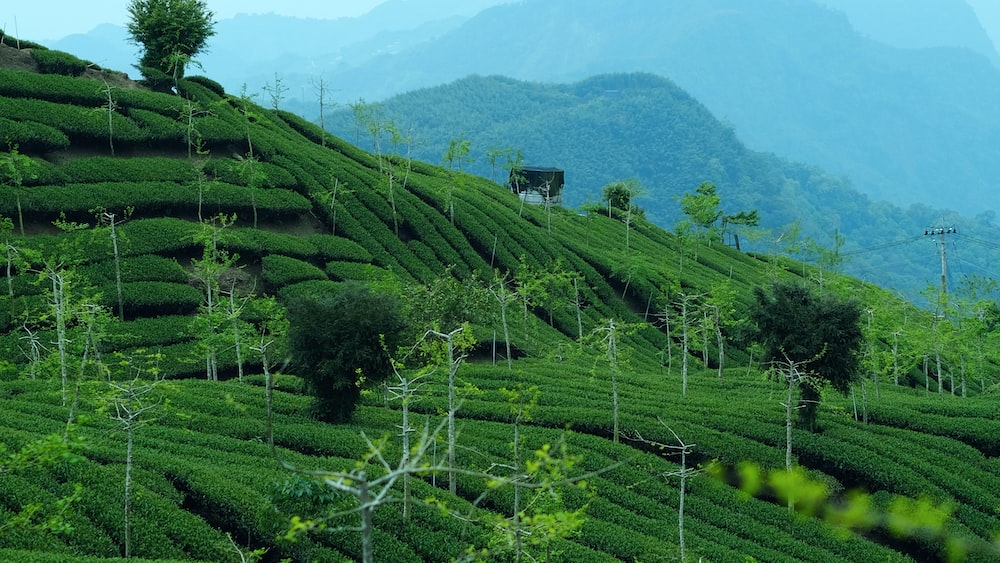
Yellow tea offers a more nuanced and subtle flavor compared to the grassier and sometimes sharp edge of green tea, making it an appealing choice for those seeking a smoother palate.
Yellow Tea vs. Black Tea: Distinguishing Flavors
Now, what when yellow tea brushes up against the boldness of black tea? It’s a tale of two cities: one gentle and elegant, the other robust and assertive.
- Black tea, known for its full-bodied richness and sometimes astringent tannins, is the big city – bustling, bold, and unabashed.
- Yellow tea is the quaint village, offering a mellow escape with hints of floral subtlety – a charming allure for those metropolitans yearning for tranquility.
By the end of this session, your taste buds – once mere acquaintances with the diverse world of tea – will be the best of friends with the elegant yellow tea taste.
Brewing the Perfect Cup of Yellow Tea
Brewing the perfect cup of yellow tea isn’t just a ritual; it’s a passion mixed with a pinch of science and a hearty dash of soul. It’s like conducting a symphony where each instrument plays a part to enchant your senses.
Best Practices for Brewing Yellow Tea
To cultivate the ultimate tasting experience, one must approach brewing yellow tea with the finesse of a maestro and the touch of an artist. Firstly, always, and I mean always, start with fresh, cold water. Imagine it’s a blank canvas, where impurities have no quarter. Secondly, use just the right amount of tea leaves – typically a teaspoon per cup ought to do the trick – and ensure they’re given ample room to dance in your teapot or infuser.
Next up, remember to whisper sweet nothings to your leaves. Kidding! But do approach the brewing process with a zen-like calm, as your mindset can make a world of difference. Also, steeping time is crucial – too long and you might as well be sipping on a cup of bitterness; too short, and you’ll miss out on the flavorful concert that’s waiting to unravel.
Approach brewing yellow tea with the finesse of a maestro, using fresh water, the right amount of tea leaves, a calm mindset, and mindful steeping time for the ultimate tasting experience.
Temperature and Steeping Time for Optimal Taste
Now, let’s talk specifics. Temperature, that temperamental beast, needs to be tamed for yellow tea to reveal its best notes. Aim for around 160-170°F (70-80°C), a gentle warmth like a spring morning sun. Steeping time is the next piece of the puzzle, where 1-3 minutes is your golden time frame – long enough to coax out flavors, but not so long that they overstay their welcome.
An overarching tip – keep a watchful eye, as your yellow tea performs its alchemy. A few seconds here or there can be the difference between sublime and just fine. And remember, if you miss the mark the first time, fret not; much like fine-tuning a musical instrument, mastery comes with practice.
Health Benefits Associated with Yellow Tea
Yellow tea more than just a treat for the senses – it’s a gift to your well-being. As you take that first sip of exquisitely brewed tea, remember that you’re also inviting a host of health benefits into your body.
Nutritional Components and Their Effects
Yellow tea is like that friend who brings goodness into your life without making a big show of it. It’s rich in antioxidants, specifically catechins and polyphenols, which straddle your body’s cells like tiny guardians against oxidative stress. Studies have shown that these compounds can be big players in the prevention of chronic diseases, quite the sidekicks to have in your corner.
Not just that, regular consumption can kick up your metabolism, which might make your jeans fit a bit looser – thank you, ECGCs, you unsung heroes of fat oxidation. As for theanine, let’s not forget this amino acid that’s akin to a symphony for your nerves, promoting relaxation and mental clarity.
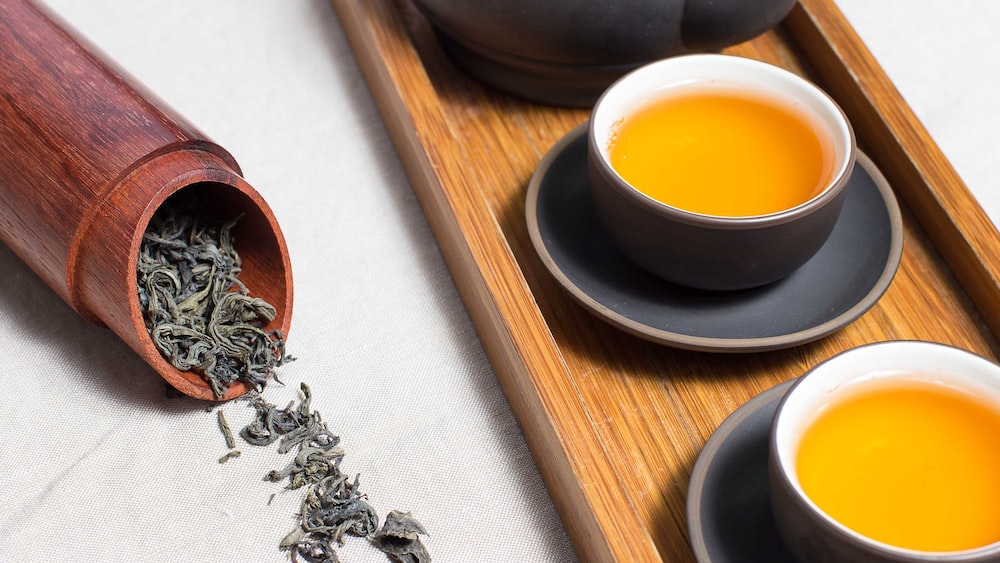
Yellow Tea in Traditional and Modern Wellness
For centuries, cultures steeped in tradition have hailed yellow tea for its medicinal properties. It was once a cup of solace reserved for emperors, rumored to grant longevity and harmony. Fast forward to today, and it’s not just for royals; this tea is making waves in modern wellness scenes.
Recent studies have put yellow tea under the microscope, observing potential impacts on several health fronts including cardiovascular health and, intriguingly, cognitive function. But more than empirical data, it’s the thousands of years of anecdotal evidence that sings its praises in whispers from one generation to the next.
Yellow tea has been celebrated for its medicinal properties for centuries, with recent studies examining its potential impacts on cardiovascular health and cognitive function.
FAQs
1. What are the most prominent flavor notes in yellow tea?
The most prominent flavor notes in yellow tea manifest as a sweet, mellow symphony with hints of chestnut and a subtle floral fragrance.
2. How does the taste of yellow tea change with different brewing methods?
The taste of yellow tea can change notably with different brewing methods; a shorter steep might yield a lighter, more delicate flavor, while a longer infusion can bring out deeper, more intense notes.
3. Can the taste of yellow tea indicate its quality?
Indeed, the taste of yellow tea can hint at its quality; a well-crafted tea will have a balanced, sweet, and smooth profile with no trace of bitter theatrics.
4. Are there any additives that enhance the natural taste of yellow tea?
While purists might balk at the notion, a slice of lemon or a dollop of honey can indeed enhance the natural taste of yellow tea, adding a zesty twist or a comforting sweetness to the brew.
Conclusion
So there you have it, my dear tea aficionados, every nuanced step to ensure that the yellow tea taste you experience is nothing short of transcendent. Whether it’s savoring the subtle layers of flavor or reveling in the tea’s longstanding reputation for health benefits, you’re now well-equipped to journey through the golden hues of this rare brew.
In our bustling modern lives, taking the time to indulge in the rituals of brewing a delicate cup of yellow tea can be a doorway to serenity. It reminds us of the luxury found in the simple, the depth in the quiet, and the connections we share with traditions past. May each cup bring you more than just pleasure, but a moment of true wellbeing.
Until next time, keep those tea leaves swirling, and may your teas be ever yellow and your spirits a hue brighter. With warmth and a sprinkle of tea leaves,
Zoe.
